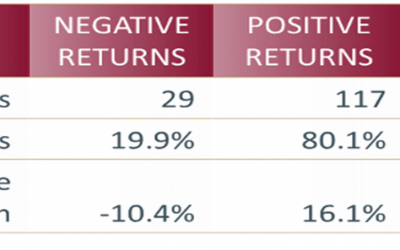If you fail to plan, then you plan will fail. The first step in any endeavour is to understand what it is you want to achieve. You then need to plan out how you will achieve this goal. The big lie is that everyone can be a winner. This is not the case the world is a competitive place. There will be winners and losers. Not everyone can be a winner at the same time. The goal is to be successful. The hard part is working out what you want to be successful at.
As a stockbroker I buy and sell shares every day. A share trade has two sides, the buyer and the seller, two people making the exactly opposite decision at the same time. Logic would say one will lose money and one will make money. Investing in direct shares is not trying to beat the other investor it is about achieving your goals.
The financial advice sector is a growing sector thanks to government legislation requiring business to pay superannuation to their employees. Unfortunately, most people do not pay attention to their superannuation as they can not access it until they reach retirement age. It is this hurdle which results in a short-sighted view on investing and is what holds you back from achieving solid performance and life changing wealth.
For those who do have the perseverance to achieve financial freedom, the next step is to get educated and learn some basic rules about what you should do and what you need to avoid.
Rule 1 – Do not lose money.
Sounds simple but in fact is where most people go wrong. When reviewing an investment people generally focus on the benefits, how much the investment will grow, what income they will receive and how long it will take to reach their goal.
When reviewing an investment, you need to focus on the negatives of each investment, what can go wrong, what protections you have, what are the consequences of the investment failing and how you reduce these risks. You need to understand and be comfortable with the risk.
Below are some common traps for investors to be aware of when looking at an investment. Warren Buffet once said, “Be greedy when others are fearful, and fearful when others are greedy.” I take this to mean do not get caught up in the hype.
Trap 1 – “Rugging” became a verb, as various crypto projects were set up, only for founders to dump their tokens and abandon projects, leaving investors holding the bag.
Trap 2 – Pump and Dump group chats expanding on many online forums, advertising opportunities to artificially inflate the price, before dumping the assets and leaving with profits.
Trap 3 – The Cold Call – you receive a phone call or email with an offer too good to pass up. You need to understand that any offer that is too good to pass up will be pick up by professional investors long before cold callers even know about it. Avoid all cold calls.
Trap 4 – Gearing up your investment. Once you borrow money to invest the risk level increases. If geared 1 for 1 your losses will be doubled. A 10% loss is compounded to a 20% loss.
Trap 5 – Tax Effective investment, mainly seen in property investments. The idea is to make a loss which can be used to reduce your taxable income and increase your tax return.
Trap 6 – The Tip – someone you know has an investment which they recommend to you. This confirmation bias. If they can convince you to invest, it makes them feel better about their investment.
Trap 7 – Timing the market. Buy the lows and sell the highs. Trying to time the market is a fast way to lose money. It is best to focus on the individual investments then try to time the market.
Trap 8 – Software strategies – buying the latest software which will allow you to beat the market. Software can be of assistance in picking and reviewing investments, but it cannot provide a guaranteed return.
- First if you had software that can beat the market why would you let anyone else have access?
- Even with the software you will still need to spend substantial time each day doing research.
- Generally, there is a large up-front charge for the software. The money would most likely be better spent getting professional advice.
Get good advice.
Getting ongoing advice and education on your investments and the regulations around financial advice is the key to being a successful investor. Your adviser is there to make sure you do not make a mistake and to navigate you through the ever change economic conditions. Your investment return will never by linear but follow these steps you will achieve your goals in the long term.




